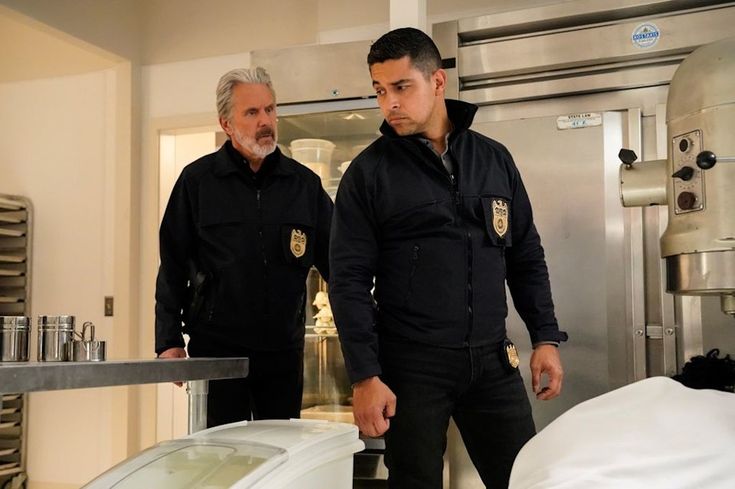
When NCIS: Sydney first launched, fans were hopeful it would bring a fresh take to the beloved NCIS universe. But by the time Season 3 rolled around, something felt… off. The spin-off seemed to lose its spark, its originality, and—most importantly—its identity. Instead of delivering that signature Aussie flavor mixed with crime-solving brilliance, it turned into a copycat attempt of the original NCIS formula—and fans weren’t buying it.
In this deep dive, we’ll unpack exactly what went wrong with NCIS: Sydney Season 3, why its imitation strategy backfired, and what it could learn from its predecessors.
The Rise of NCIS: Sydney — A Promising Start
When NCIS: Sydney premiered, it brought something fresh to the franchise. The vibrant coastal backdrop, the cultural mix, and the sharp, witty dialogue gave the show a personality of its own.
Fans loved seeing the NCIS brand expand globally, showing how international teams handle high-stakes cases. It was a thrilling concept—until the writers began chasing the success of the original series a little too closely.
Season 3: When the Original Charm Faded Away
By Season 3, it became clear that NCIS: Sydney had lost its voice. Instead of building on the unique elements that made it special, it started mimicking the tone, pacing, and even character archetypes of the original NCIS.
The result? Viewers felt like they were watching a watered-down version of the American classic—minus the chemistry and emotional depth.
The Copycat Formula That Failed
Every long-running franchise has a “blueprint.” For NCIS, it’s the mix of team camaraderie, mystery, humor, and heartfelt moments. But when NCIS: Sydney tried to copy that formula too literally, it backfired.
Fans noticed recycled storylines, predictable twists, and characters who felt like carbon copies of the OG NCIS cast.
Example: The Gibbs vs. Mackey Dilemma
Jane Tennant (NCIS: Hawai’i) succeeded because she redefined leadership in her own way. But Mackey, the Aussie team leader in Sydney, was written as a near clone of Gibbs—stoic, rule-bound, emotionally distant.
The problem? That dynamic worked in 2003, not 2025. Audiences wanted authenticity, not imitation.
Character Development Took a Hit
Strong character arcs are the backbone of any great procedural drama. Unfortunately, Season 3 of NCIS: Sydney relied on surface-level storytelling.
Supporting characters who once added flavor and depth were sidelined or flattened into clichés. Instead of evolving, they regressed.
Where’s the Emotional Depth?
Fans loved early NCIS: Sydney episodes because of the heartfelt moments that balanced out the crime-solving. Season 3, however, felt robotic—more about ticking boxes than telling stories that resonated emotionally.
Overusing Familiar Tropes
There’s a fine line between homage and repetition. Season 3 crossed it—repeatedly.
-
Another “rogue agent” subplot? Check.
-
A mole inside the agency? Check.
-
Team trust issues? Double check.
Instead of innovating, NCIS: Sydney leaned on the franchise’s greatest hits, and it showed.
The Aussie Identity Was Lost
What made NCIS: Sydney stand out was its local color. The Australian slang, cultural references, and unique landscapes made it a breath of fresh air in the NCIS world.
By Season 3, that identity had faded. The show looked and felt more like NCIS: Los Angeles Down Under than a true Aussie production.
Fan Reactions Were Brutal
Social media didn’t hold back. Fans called out the lazy writing, predictable cases, and lack of originality. Reddit threads and X (Twitter) posts were full of frustration.
Many longtime viewers said Season 3 felt like “NCIS fanfiction written by an algorithm.” Ouch.
Critical Response: A Harsh Reality Check
Critics echoed the fans’ sentiment. Ratings dipped, and reviews pointed out the show’s inconsistent tone and lack of creative direction.
Even diehard NCIS fans began to question whether the spin-off still had a place in the franchise.
Comparing NCIS: Sydney to Other Spin-Offs
Unlike NCIS: Hawai’i or NCIS: Los Angeles, Sydney struggled to balance originality with franchise loyalty.
-
Hawai’i reimagined the NCIS world with strong female leadership and tropical storytelling.
-
Los Angeles mastered high-octane action and undercover missions.
-
Sydney…tried to be both and ended up being neither.
Missed Opportunities for Growth
There was so much potential in Sydney’s location and cast. The writers could have explored:
-
Cross-border intelligence with Pacific neighbors
-
Australian Navy and indigenous cultural perspectives
-
Unique crimes tied to the region’s environment and politics
Instead, they played it safe—and it showed.
The “Franchise Fatigue” Effect
Franchise fatigue is real. When fans feel like they’ve seen the same storyline in ten different NCIS versions, interest wanes.
NCIS: Sydney Season 3 is a perfect example of how too much sameness leads to audience burnout.
Can NCIS: Sydney Recover?
Absolutely—but only if it embraces its uniqueness again. The writers need to:
-
Focus on local storytelling
-
Develop characters beyond archetypes
-
Inject humor and humanity back into the dialogue
-
Take creative risks that reflect Australia, not Washington D.C.

Lessons for the Franchise
The fall of NCIS: Sydney Season 3 is a cautionary tale for all spin-offs. Fans crave familiarity, yes—but they also want innovation.
Copying the formula may get you through a season, but originality is what earns loyalty.
Final Verdict
NCIS: Sydney Season 3 tried to replicate what made NCIS a global hit, but in doing so, it lost its own magic. The show’s strength was always its distinct identity—its cultural edge, its humor, and its vibrant setting.
When that disappeared, so did the audience connection.
If Season 4 ever happens, here’s hoping it remembers what made Sydney shine in the first place.
Conclusion
In the end, NCIS: Sydney Season 3 serves as a reminder that imitation rarely equals inspiration. The best spin-offs don’t mimic—they evolve. And unless Sydney rediscovers its voice, it risks being remembered as the franchise’s biggest missed opportunity.
